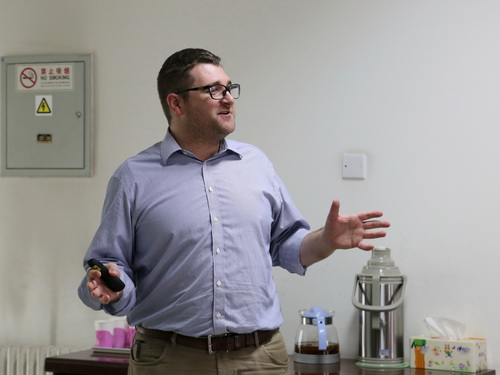Modification of solution viscosity using multivalent polymers has been accomplished through dynamic cross-linking in water using CB[8]. These hydrogels, with extremely high water content (up to 99.75% water by weight), have also been prepared by utilising renewable cellulose derivatives. Their rapid formation and shear-induced flow properties make these materials perfectly suited for use as injectable hydrogels for delivery of therapeutics. Indeed, model proteins can be easily encapsulated and their sustained release is observed over the course of 6 months. This far surpasses the current state-of-the-art for protein release from a hydrogel, highlighting these materials as important potential candidates for sustained therapeutic applications.
Furthermore, polymer-inorganic composite materials can be readily prepared based on the CB[8] coupling of multivalent gold nanoparticles (AuNPs) to functional copolymers. When these systems are attached onto gold surfaces intricate control is achieved over the site-selective immobilization of colloids and peptides. This has great scope for the development of optical materials, chemical sensors and biological separations. Additionally, they have developed an innovative new technique for manufacturing 'smart' microcapsules in large quantities using continuous flow in a single step from tiny droplets of water. The microdroplets are loaded with copolymers, AuNPs and CB[8]. The major advantage of this manufacturing platform over current methods is that a variety of cargos can be efficiently loaded during the microcapsule formation at room temperature, and the dynamic supramolecular interactions provide control over the porosity of the capsules and the timed release of their contents using stimuli. Our CB[n] based host-guest systems exhibit dynamic self assembly and are capable of responding to stimuli (photochemical, chemical, and thermal) allowing for external control and function to be built into the materials.

NEWS